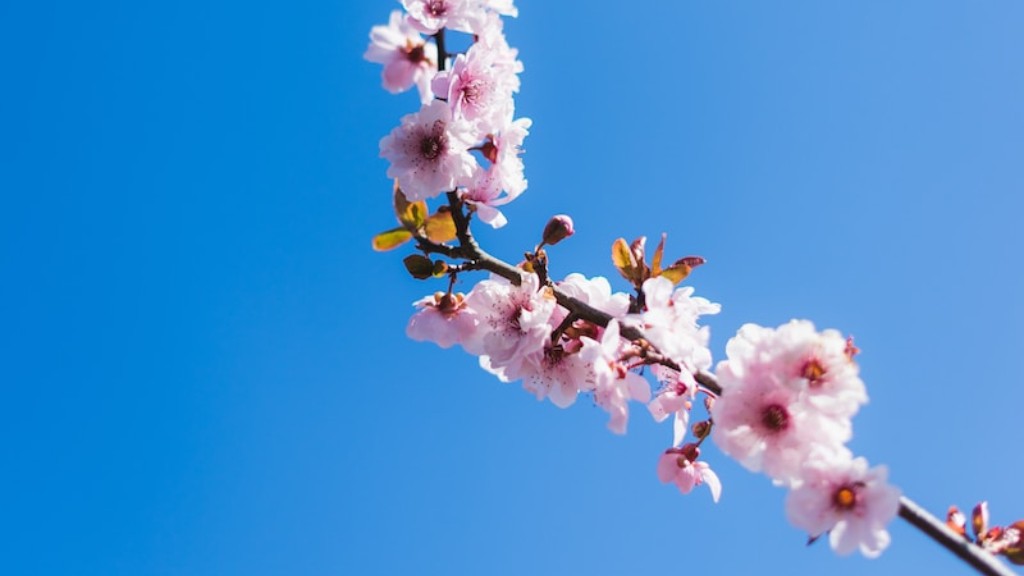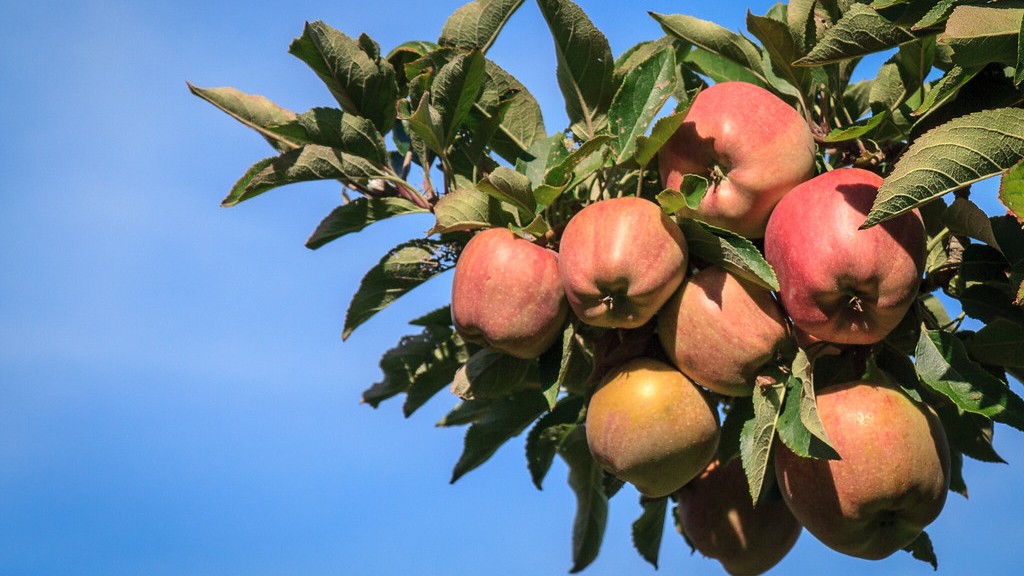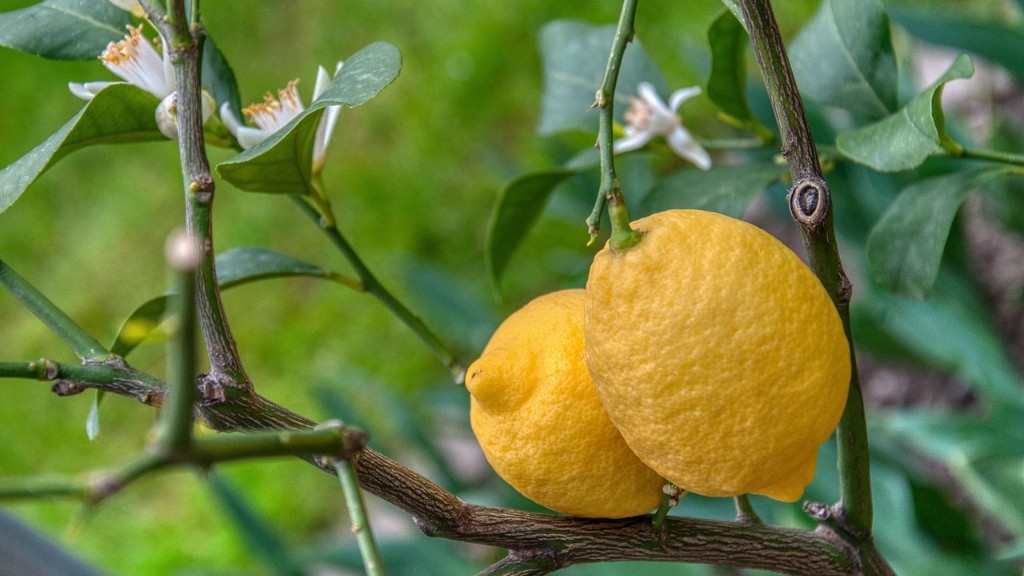Cherry blossoms are one of the most eye-catching and iconic features of the spring season. The beautiful pink and white petals flutter in the soft breeze, reminding us of nature’s beauty, and their ephemeral existence is a symbol of the fragility and fleetingness of life. But when should you plant a cherry blossom tree in your garden, and how will you ensure it remains in bloom for years to come?
Cherry blossom trees thrive in mild, temperate climates. They can survive many cold winters, but thrive most in USDA plant hardiness zones 5b-10a. It is important to ensure you select a variety of tree suited for your individual climate, as many cherry blossom trees are not native to North America and will not survive in colder climates.
In terms of planting a cherry blossom tree, it is best to wait until after the winter season, when the weather starts to warm up and the ground is no longer frozen. Planting in early spring will give the tree enough time to establish itself before summer arrives. Doing so also reduces the stress placed on the tree and gives it an opportunity to become better acclimated to its new environment.
To ensure your cherry blossom tree produces full blooms, it is important to give it plenty of sunlight. Find the sunniest spot of your garden and avoid areas with too much shade, as cherry blossom trees need at least six to eight hours of direct sunlight each day to remain vibrant and strong. Planting it near a pond or water feature is also recommended, as cherry blossom trees need to be given ample water during their growing season.
It is also important to provide the tree with nourishment during the growing season. Fertilizer should be applied every three weeks, until the flowering period has passed, which will help the tree to grow and reach its maximum potential. Taking the time to prune the tree, removing branches that could affect the tree’s health, can also help enhance the flowering process.
Finally, you should also provide your cherry blossom tree with protection against diseases and pests. Disease and pest control should be applied in early spring and throughout the growing season. Utilizing the correct insecticides and fungicides will help keep the tree healthy and its blooms in check.
Maintaining a Cherry Blossom Tree
Just as it is important to give a cherry blossom tree the correct soil, sunlight and nourishment when planting, so too is it important to remain vigilant in maintaining a healthy environment for the tree. This includes watering during the summer months, pruning in late winter, and using organic mulch or cardboard to help keep the soil around the base of the tree moist and cool. Taking regular soil samples to test for levels of nitrogen, phosphorus and potassium is necessary to maintain soil health, while composting can help to give the tree the boost it needs to remain vigorous.
As with any tree, taking precautions against pest infestations is also important. Cherry blossom trees are particularly susceptible to scale insects and fungal diseases, so there is a chance these will affect the tree in some way. If you notice any signs of pest damage or disease, it is best to treat the tree immediately with the appropriate insecticide or fungicide.
Caring for cherry blossom trees also requires a certain level of maintenance. Micro-structure pruning, for example, helps to bring out the natural beauty of the tree, while thinning out competing branches can open up the flowering space and allow for more light to reach the blossoms. Crop thinning, meanwhile, is a form of pruning which selects only the most desirable blooms, essentially culling any offshoots that do not meet the desired size and shape, while improving air circulation.
Pests and Diseases to Look Out For
A range of pests and diseases can affect cherry blossom trees, so it is important to keep an eye out. Some of the more common ones to look out for include canker diseases, bark beetles, scales and mites, borers, and aphids. By identifying these pests early, it is possible to begin treatment straight away, helping to limit any potential damage from the disease or pest.
Cankers are a form of fungal infection that attack the trunk and branches of the tree, leaving behind discolored tissue. They can appear on any part of the tree and can be quite damaging, as untreated cankers can spread to other parts of the tree and even cause dieback. Bark beetles are a form of pest that will chew away at the bark of the tree, weakening and damaging the interior of the trunk and branches. Scale and mite infestations, meanwhile, can be recognized by small, raised bumps on the trunk, bark, and leaves.
Borers are another form of pest to be aware of. These insects bore their way into the trunk, weakening the tree and significantly reducing the lifespan. Aphids, meanwhile, are insects that feed on the leaves and sap of the tree, leaving behind small white spots on the foliage.
In some cases, it may be more effective to use natural forms of pest control than insecticides, if the severity and nature of the infestation warrants it. This can include spraying the tree with water, or introducing natural predators into the ecosystem, such as lacewings, ladybirds or spiders.
When is the Best Time to Plant a Cherry Blossom Tree?
Ideally, the best time to plant a cherry blossom tree is late winter or early spring, once the cold weather has passed. This allows the tree sufficient time to take root and become acclimated to its new environment, while avoiding the risk of freezing temperatures. It is also a good idea to analyze the soil, ensuring it is suitable for a cherry blossom tree and giving it the right combination of nutrients to promote healthy growth.
It is important to remember, however, that the exact time to plant a cherry blossom tree varies in accordance with local climate. While in northern climates it is typically directly after the final frost, in southern climates it can be as early as late winter, depending on when the cold weather arrives. It is best to monitor your local weather conditions and speak to an experienced horticulturalist to determine the most suitable time for planting in your particular area.
Benefits of Planting a Cherry Blossom Tree
Planting a cherry blossom tree in your garden will provide a number of benefits, both aesthetically and in terms of practicality. First and foremost, its beautiful pink and white flowers will create a stunning visual appeal. Small children in particular will take great delight in the beauty of the blooming tree, while the presence of the bark and foliage will create a rich and vibrant environment.
In addition, cherry blossom trees are useful for both vermin deterrence and food production. Because of their delicate nature, vermin such as rats and rabbits are often deterred by their presence, while the sweet-tasting fruits are edible for both humans and wildlife, encouraging the presence of animals in your garden.
Furthermore, cherry blossom trees can also be used for medicinal purposes. The flowers have long been used in traditional Chinese medicine, providing relief from a range of ailments, from headaches to digestive issues. The bark of the tree also contains compounds beneficial to human health and can be dried and ground into a powder for use in teas and infusions.
Finally, cherry blossom trees are also renowned for their longevity. Many varieties can live for up to several decades, with some reaching 100 years of age or more. This makes them a wise long-term investment, one that will last for generations to come.
Observing the Cherry Blossom Tree
The hanami tradition of Japan is perhaps the purest celebration of cherry blossoms, a festival dedicated to the admiration of the tree in all its ephemeral beauty. It is a tradition centered around observation and appreciation, giving people the chance to take a moment to appreciate the fragility and beauty of the cherry blossom’s blossoming period, while connecting with friends and family.
That said, cherry blossom appreciation is by no means restricted to Japan, with similar events taking place around the world. From the National Cherry Blossom Festival in Washington, DC to the annual World Cherry Blossom Festival in France, these events offer the chance to observe and appreciate the beauty of these trees in all their glory.
Observing a cherry blossom tree does not need to be a formal, organized event either. Taking a few moments to appreciate the beauty of the blooms as you walk past is a wonderful way to appreciate the beauty of nature, and connect with the world around us.
Preserving a Cherry Blossom Tree
With cherry blossom trees, it is important to remember that although they can survive many cold winters, too much harsh weather can cause severe damage to the tree, and even risk its complete loss. Thus, taking proactive steps to ensure its preservation during the winter months is important.
Mulching can be an effective way to ensure the tree’s survival during bouts of cold weather. Using organic mulch or cardboard over the roots of the tree can help to keep the ground moist and insulated, while using a plastic cover around the trunk of the tree can protect it against unforgiving winds and heavy frosts.
In addition, applying a layer of salt fertilizer in the autumn season can help to nourish the tree and prepare it for winter, while checking the soil every now and then throughout the season can help to provide early warnings against any potential hazards. Taking steps to keep the tree hydrated during winter is also important – giving it enough water to sustain it until the weather begins to warm up.
Cherry Blossom Tree in the Landscape
Cherry blossom trees offer a wealth of beauty when planted correctly in the landscape. Whether it is being used as an ornamental tree in a garden or as a stand-alone feature in a public park, this tree can provide a stunning, eye-catching feature.
It is important to remember, however, that incorporating the tree into a design requires careful planning. Everything from the placement to the soil and sunlight needs to be taken into account for optimal growth and development, with particular attention paid to any potential hazards that could affect it, such as strong winds or nearby trees.
Incorporating features such as ponds, waterfalls, or other features around the tree can offer visual appeal, as well as create an inviting environment for animals. Strategically placed flowers around the tree can give an added splash of color, while gravel or decorative stones can provide both a practical and aesthetic purpose.
Finally, selecting an appropriate support structure is also an important step. If the tree is tall and broad, wooden posts or stakes can be used to support its strong branches, while smaller cherries may require only a light trellis.




